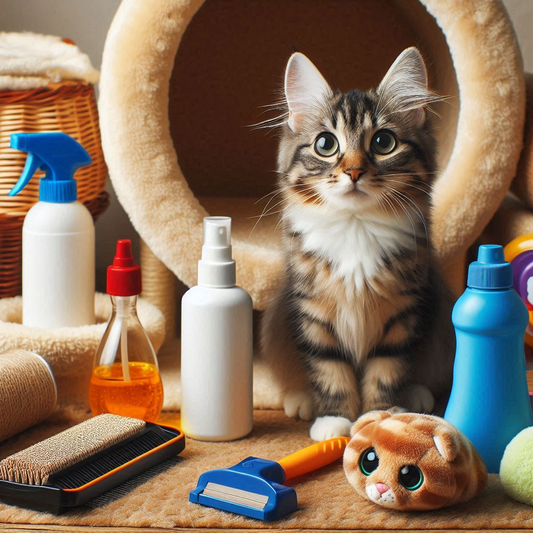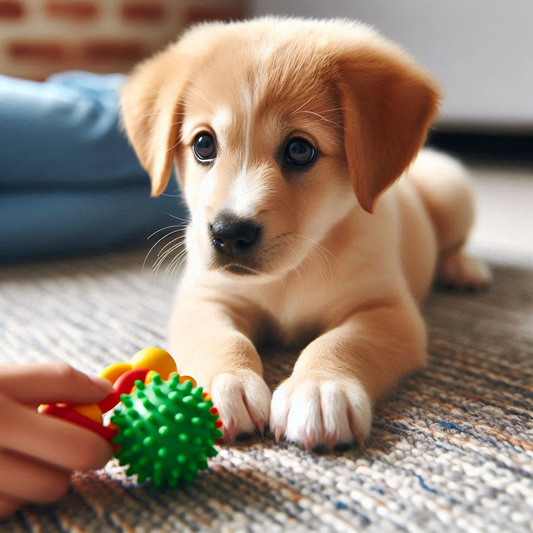
Top 5 Puppy Commands You Must Teach!
Share
I. Introduction
Training a puppy from an early age is essential for fostering good behavior and creating a strong bond between you and your furry friend. Not only does early training make life easier for both pet and owner, but it also sets the foundation for a well-mannered dog in the future. When you first bring your puppy home, they’re at a prime age for learning. Their curious nature and eagerness to please make it the perfect time to introduce basic commands.
Starting with simple commands can make a big difference in how a puppy interacts with the world around them. For example, teaching a puppy to "sit" can prevent unintentional mischief, like knocking over small children or jumping on guests. Basic training also promotes mental stimulation, which is crucial for a young puppy's development. Engaging your puppy in training sessions not only makes them smarter but also helps to use up some of that boundless puppy energy.
In the following sections, we’ll cover the first five essential commands every puppy should learn: "sit," "down," "stay," "come," and "heel." These commands are the building blocks of a well-behaved dog. Each command serves a specific purpose and can help make daily life more manageable. Whether you're a first-time pet owner or an experienced dog enthusiast, these basic commands will help set you and your puppy on the path to a happy, harmonious relationship.
II. The Importance of Early Training for Puppies**
Early training lays the foundation for a well-behaved and happy dog. When you begin training your puppy as soon as they come home, you set clear boundaries and establish good habits right from the start. Teaching basic commands like “sit”, “down”, and “stay” helps your puppy understand what’s expected of them in various situations, reducing stress for both you and your pet.
Moreover, early training strengthens the bond between you and your puppy. It’s a chance for positive interactions, where your puppy learns to trust and respect you. By using positive reinforcement such as treats and praise, you create an environment where your puppy is eager to learn and please.
Also, a trained puppy is safer. Commands like "stay" can prevent them from running into dangerous situations, while "sit" and "down" can help manage their behavior in public. This not only ensures your puppy’s safety but also makes them more welcome in public places and social settings.
Additionally, starting early makes it easier to correct unwanted behaviors before they become ingrained. Puppies are more adaptable and eager to learn during their early months, making training a more efficient process.
In summary, early training is essential for fostering a well-behaved, happy, and safe pet. It strengthens your bond, ensures your puppy's safety, and prevents future behavioral issues. Begin training as soon as your puppy arrives to maximize these benefits and set the stage for a harmonious life together.
### First Command: Sit
Teaching your puppy the "Sit" command is a fundamental part of early training. It's often one of the first commands because it's relatively easy for puppies to grasp and lays the foundation for more advanced training. Here’s how to get started:
**Step-by-Step Training Guide**
1. **Find a Quiet Spot:** Choose a distraction-free area to help your puppy focus. Make sure you have some tasty treats on hand as positive reinforcement.
2. **Get Your Puppy’s Attention:** Hold a treat close to your puppy’s nose to ensure they are focused on you.
3. **Lure into Position:** Slowly move the treat upward and over your puppy’s head. This will naturally cause their bottom to lower to the ground as they follow the treat.
4. **Say "Sit":** As soon as your puppy’s bottom touches the ground, say the word "Sit" clearly and calmly. Practice your timing; say it right when they sit.
5. **Reward and Praise:** Immediately reward your puppy with the treat and plenty of enthusiastic praise. Positive reinforcement is key to helping your puppy associate the command with the action.
6. **Repeat:** Practice this several times each day, but keep sessions short so your puppy doesn’t get bored or frustrated. Consistency and patience are vital.
The "Sit" command isn't just a cute trick; it’s crucial for controlling your puppy in various situations—like greeting guests or before mealtime. Mastering this foundational command leads to a well-behaved dog, ready to learn more. Plus, it strengthens the bond between you and your furry friend, making training enjoyable for both of you.
Teaching your puppy to lie down on command is an essential step in their training journey. The "Down" command not only helps with obedience but also offers a useful tool for managing your pup's behavior in various situations. Here's a straightforward guide to successfully training your puppy to follow this command.
First, gather some small, tasty treats to motivate your puppy. Start by getting your puppy into a "Sit" position. Once sitting, hold a treat close to their nose and slowly lower it to the ground. Your pup will naturally follow the treat with their nose, making it easy for you to guide them into a lying position.
As soon as your puppy's elbows touch the floor, say "Down" clearly and give them the treat. It's crucial to reward them immediately, as this helps them link the action with the command and the treat. Repeat this exercise in short sessions, no longer than 5-10 minutes, to keep your puppy engaged without tiring them out.
Patience is key in this training phase. Pups might take a while to fully understand what you're asking for, but consistency will yield positive results. Praise your puppy generously each time they get it right to reinforce good behavior.
Integrating the "Down" command into daily routines can help solidify the learning. For instance, before feeding or playing, ask them to lie down. This not only strengthens the behavior but also teaches them patience and self-control.
In summary, the "Down" command is a vital part of your puppy's early training, promoting good behavior and helping to manage their activity in different circumstances.
V. Third Command: Stay
Teaching your puppy the "Stay" command is crucial for their safety and your peace of mind. This command helps control your puppy in different situations, from busy streets to visits at the vet. It can also prevent them from running into dangerous situations.
To begin training "Stay," start in a quiet environment with minimal distractions. Have your puppy sit down first. Once they are in position, show them a flat palm and clearly say "Stay." Then, take one small step back. If they remain in place, praise them and offer a treat. If they move, gently guide them back to the same spot and try again.
Gradually increase the distance and duration. Take two or three steps back before returning and rewarding them. A key tip is to always return to your puppy before they get up. This teaches them that "Stay" means to wait until you come back.
Consistency is crucial. Use the same hand signal and verbal cue every time. Practice in different environments, gradually adding distractions as your puppy gets better.
By mastering the "Stay" command, you build a foundation for more advanced training. It strengthens your bond with your puppy and enhances their ability to follow other commands. Regular practice, patience, and positive reinforcement make this command a valuable tool for a well-behaved and safe pet.
VI. Conclusion
In conclusion, teaching your puppy basic commands is essential for a well-behaved and happy dog. Starting with commands like "sit," "down," and "stay" lays a strong foundational behavior and builds a positive relationship between you and your pup. Early training not only ensures safety in different environments but also makes everyday activities easier and more enjoyable for both of you.
By focusing on these three primary commands, you give your puppy the tools to understand what you expect from them. This makes future training simpler and more effective. Consistent practice, patience, and positive reinforcement are key to successful training. Over time, your puppy will not only master these commands but will also be more attentive and responsive to additional commands and cues.
Remember, every puppy learns at their own pace. Celebrate small victories and stay consistent with training sessions to see lasting results. With these foundational commands in place, you're setting the stage for a lifetime of good behavior and mutual understanding.
Start today to give your puppy the best chance of becoming a well-mannered and happy dog and don't forget to shop for dog supplies to entertain them.



